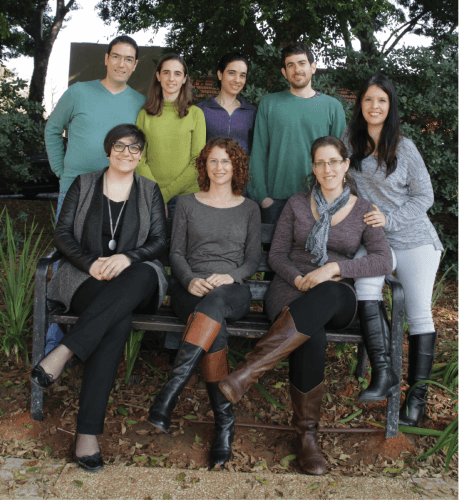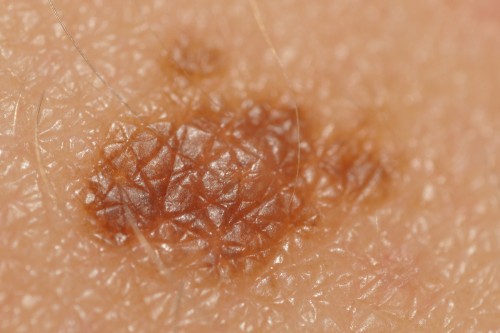Prof. Jordana Samuels aims to identify main subgroups of melanoma cancer, each of which is identified by a unique molecular "signature". In the future, the treatments will be adapted to the specific mutations that characterize each subgroup.

good news
One Sunday about ten years ago, Prof. Jordana Samuels, then a young postdoctoral researcher, was working in a laboratory at Johns Hopkins University. She noticed that the DNA of two cancer patients contained the same mutation in a certain gene. The laboratory was empty, and apart from her, only her supervisor, Prof. Brett Vogelstein, one of the world's top cancer researchers, was there. He took one look at the find and declared: "I think there is a home run here." Samuels, who had arrived in the United States only a few months before, was not familiar with the phrase referring to great success in the game of baseball, but immediately understood that it was particularly good news.
That was indeed the case. Not only did she discover a new gene that causes cancer, but it turned out that the gene, called PIK3CA, is one of the most common genes among those that cause different types of cancer. The findings, which were immediately accepted for publication in the journal Science, opened a new direction of research, which quickly attracted dozens of researchers from universities and pharmaceutical companies.
Samuels recorded another impressive achievement in 2006, after she established her own laboratory at the National Human Genome Research Institute in Bethesda, Maryland. At this point, she had already decided to focus on melanoma, one of the deadliest types of cancer, the genetics of which is still very unclear. In collaboration with Prof. Steven Rosenberg, head of the surgery department at the National Cancer Institute, she identified a new genetic mutation that appears in about 20% of melanoma patients. "We seemed to have found the Achilles' heel of a significant portion of melanoma cases," says Prof. Samuels.
The discovery is extremely encouraging, because it is of immediate importance for the treatment of patients. The development of a new drug takes years, but the new mutation is found in a gene called ERBB4, which is already a target for the drug - against breast cancer. Clinical studies have already begun to test whether this drug can also help melanoma patients.

In her new laboratory in the Department of Molecular Cell Biology, Prof. Samuels continues to research genetic mutations involved in melanoma. When a cancerous tumor is diagnosed, the genes in its cells already contain tens, if not thousands, of mutations, some of which are "leading" mutations that play a role in the growth of the tumor, but some of which are "accessory" mutations, which do not play an important role in the development of the cancer. With the help of genomic data from hundreds of patients, Prof. Samuels develops approaches that distinguish between the leading mutations and the accompanying ones.
In her work, she relies on a database of tissues taken from melanoma tumors and corresponding healthy tissues, which she established in collaboration with the National Cancer Institute in the United States. Using viruses, she inserts molecular "markers" into DNA, with the aim of developing a systematic approach to determining the role of mutant genes. The labeling allows her to compare the activity of normal genes and that of mutant genes in human cells.
The ultimate goal is personalized medicine. Prof. Samuels aims to identify main subgroups of melanoma cancer, each of which is identified by a unique molecular "signature". In the future, the treatments will be adapted to the specific mutations that characterize each subgroup.
personal
When she was a little girl, Prof. Samuels loved to observe insects. At the age of six, she already wrote an "article" on digestion, crushed pills into powder to create "medicines", and asked her parents to buy her a microscope. But it wasn't until the age of 17, after attending a summer camp named after Bessie Lawrence at the Weizmann Institute of Science, that she decided to become a scientist.
Samuels was born in Tel Aviv and grew up in Israel, Mexico, France and England. She attended high school in Paris, where her parents still work: her father, born in England, is employed at the Shimon Wiesenthal Center, and her mother, born in Argentina, works at UNESCO.
Samuels returned to Israel after completing a bachelor's degree at the University of Cambridge in England and serving in the IDF in the medical corps. She received a master's degree from the Hadassah School of Medicine of the Hebrew University in Jerusalem, and in 2002 she received a third degree in molecular biology of cancer from Imperial College London. In her doctoral studies, she found a new family of genes that control the activity of p53, one of the key genes that suppress cancer.
After postdoctoral research at Johns Hopkins University, she ran her own laboratory at the National Human Genome Research Institute in Bethesda, Maryland for six years. In 2012, she joined the Weizmann Institute of Science team as an associate professor. She lives in Rehovot with her husband, Dr. Uri Lev, an expert in bioethics. The couple has two sons: Gil, born in 2005, and Nitzan, born in 2008.
Tags:
